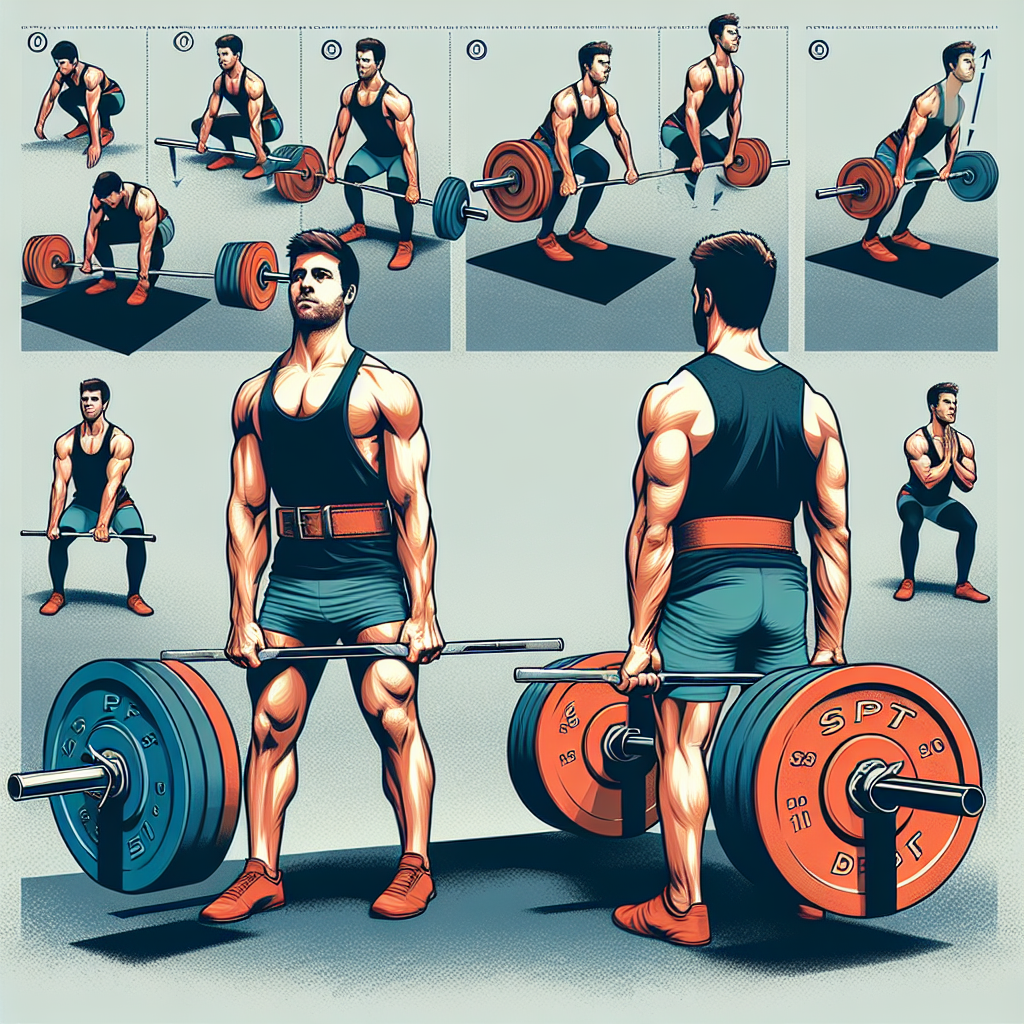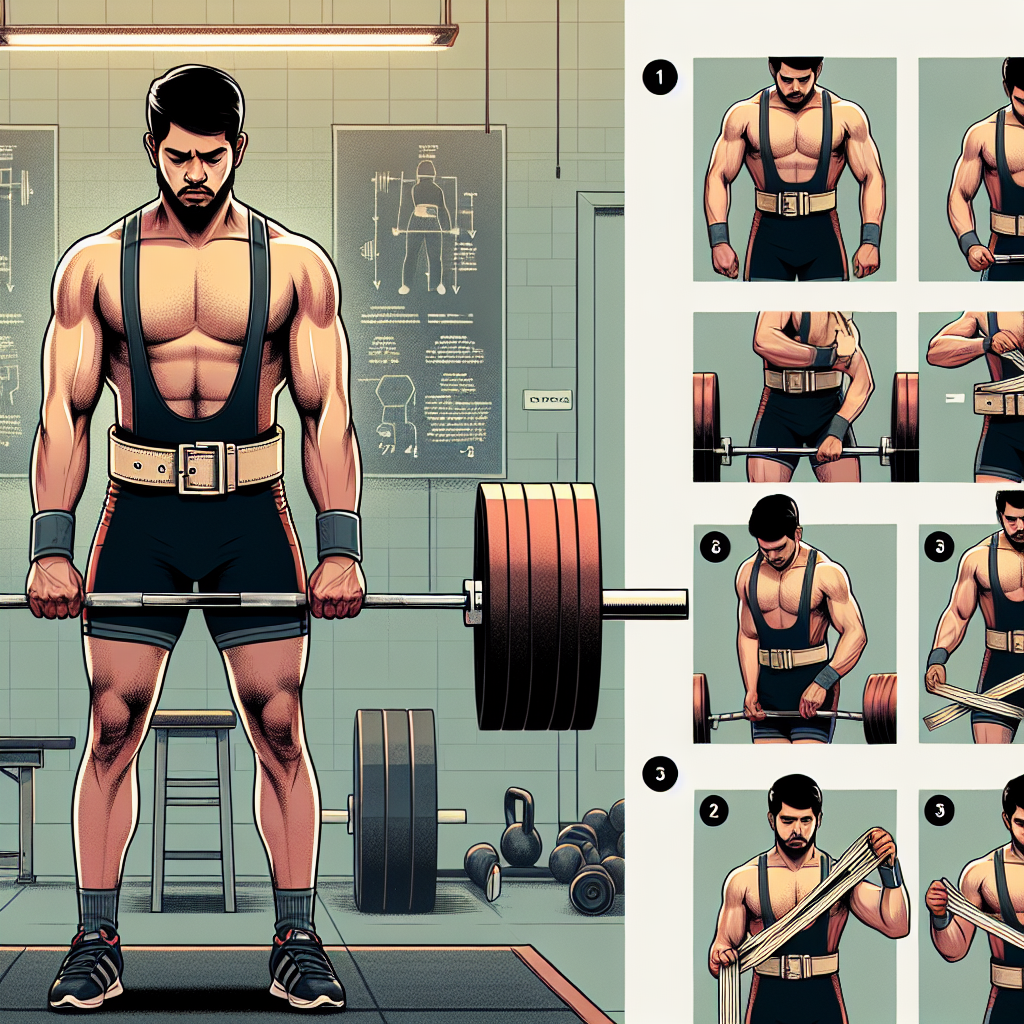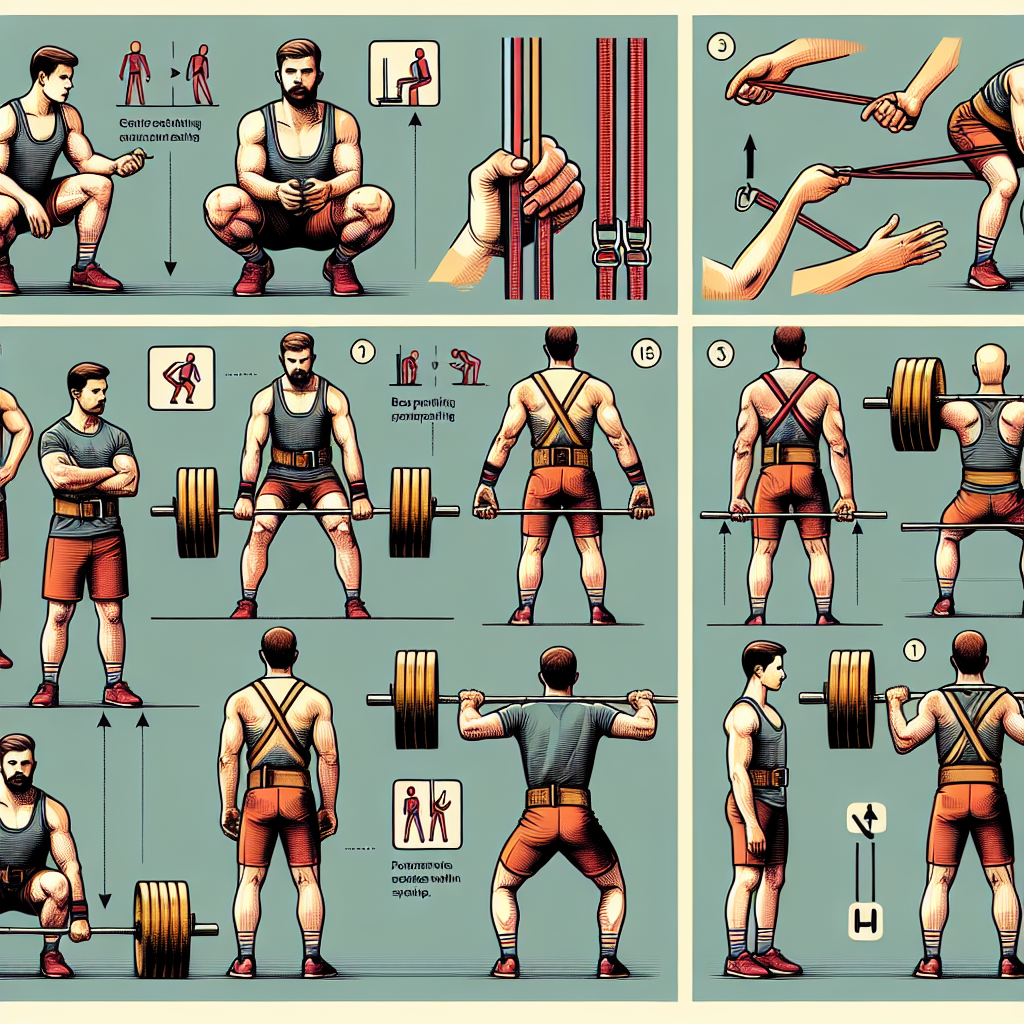How To Use Straps For Deadlift
How To Use Straps For Deadlift

Are you ready to take your deadlifting game to a whole new level? Whether you're a gym newbie or a seasoned powerlifter, mastering the deadlift is key to building serious strength and muscle. But here's the kicker—using straps can be a game-changer for your lifts, allowing you to push past those pesky personal bests. In this guide, we’re diving into the nitty-gritty of how to use straps effectively, sharing deadlift tips that'll have you lifting like a pro in no time. So, grab your gear, and let's get those gains rolling with some top-notch deadlifting equipment! #DeadliftTips #LiftingStrapsBenefits
Introduction to Deadlift Straps
For those aiming to elevate their deadlift performance, straps are indispensable. Understanding their purpose and dispelling myths can enhance your lifting journey. Let's dive into why lifting straps are a game-changer and how they can be effectively incorporated into your routine.
Why Use Lifting Straps?
Lifting straps are essential tools for weightlifters aiming to improve their grip on heavy lifts. They help by transferring the load from the grip to larger muscle groups, allowing you to focus more on form and power. This is particularly useful when your grip fails before your muscles do, enabling you to lift heavier weights safely.
Using straps can reduce the risk of injury. By providing additional support, they help maintain correct posture and alignment, which is crucial during heavy lifts. Straps can also help you overcome plateaus by allowing you to lift heavier weights than your grip strength alone would permit.
Incorporating straps into your routine offers psychological benefits too. Knowing that your grip won't fail mid-lift can boost your confidence, allowing you to push your limits. With their help, you can focus on technique and power, achieving those much-desired personal records.

Common Misconceptions and Myths
Despite their utility, several misconceptions surround lifting straps. One common myth is that straps make you weaker by not training your grip strength. In reality, they complement your training, allowing you to focus more on your target muscles during heavy lifts.
Another myth suggests that using straps is a crutch for the weak. In truth, many seasoned lifters and athletes use them strategically to enhance performance. They are tools to be used wisely, not shortcuts.
Lastly, some believe straps can cause dependency. While overuse can be counterproductive, moderate use enhances training by allowing longer sets and heavier lifts. The key is finding a balance, using them when necessary, and training grip strength independently.

Choosing the Right Straps
Selecting the right straps requires considering material, comfort, and purpose. Straps come in various materials like cotton, nylon, and leather, each offering distinct advantages. Cotton straps are generally softer and more comfortable, while nylon offers durability and strength.
Comfort and adjustability are crucial. Look for padded straps that won't dig into your skin. Adjustable options can cater to different wrist sizes, providing a secure fit. Keep in mind the type of lifting you'll be doing when choosing your straps.
Finally, consider where you'll be using them. Some straps are better for heavy duty lifting while others are more suitable for general gym use. Evaluate your needs, try different types, and select the straps that best fit your lifting style.
How to Use Straps Effectively
Understanding the proper use of straps can significantly improve your lifting performance. From ensuring correct technique to avoiding common mistakes, there's much to master when incorporating straps into your routine.
Proper Technique for Straps
Mastery of technique is crucial for using straps effectively. Here’s a step-by-step guide:
-
Loop the strap around your wrist, ensuring it's snug but not too tight.
-
Wrap the strap around the barbell by looping it from underneath, creating a spiral.
-
Grip the bar and strap tightly, ensuring the strap is secure before lifting.
Proper technique ensures maximum support and minimizes injury risk. Practice with lighter weights until you're comfortable, then gradually increase the load. Pay attention to your form, ensuring your wrists remain straight and aligned.
Avoiding Common Mistakes
To get the most out of your straps, avoid these common pitfalls. First, don’t rely solely on straps for every lift; they’re a tool to be used strategically. Over-reliance can hinder grip strength development.
Secondly, ensure correct wrapping technique. Improper wrapping can lead to slippage or even injury. Take the time to practice and perfect your wrapping until it becomes second nature.
Finally, don't ignore your grip strength. Dedicate time to exercises that strengthen your grip, ensuring a balanced approach to your lifting routine. Remember, straps are a supplement, not a substitute.
Tips for Maximum Grip Strength
Even with straps, grip strength remains vital. Here are a few tips to boost your grip:
-
Incorporate grip-specific exercises like farmer’s carries and dead hangs.
-
Use tools like grip trainers or hand grippers to build endurance.
-
Alternate between strap-assisted and unassisted lifts to develop a balanced strength.
Regularly challenge your grip with different techniques, ensuring a comprehensive approach to strength training. By balancing strap use with grip-specific exercises, you'll improve overall performance and avoid dependency on straps.
Improving Deadlift Performance
Straps are just one part of a broader strategy to boost your deadlift performance. Training, integrating straps, and understanding their benefits will collectively help you break personal records.
Training for Personal Records
Achieving a personal record requires a tailored training approach. Begin by setting clear goals and developing a structured plan. Focus on progressive overload, gradually increasing weight while maintaining form.
Utilize compound movements such as squats and deadlifts to build strength across multiple muscle groups. These foundational exercises will enhance your overall power and support heavier lifts.
Stay consistent and track your progress regularly, adjusting your routine as needed. Keep specificity in mind—tailor your training to improve your deadlift by incorporating variations and accessory exercises.
Integrating Straps into Routine
Straps should be integrated into your routine thoughtfully. Use them for heavy sets when grip becomes a limiting factor, but ensure that some sets are performed without them to foster grip strength.
Consider a balanced routine where you alternate strap use across different workouts. This ensures that you build overall strength and not just rely on the straps during every session. Incorporate them strategically to avoid over-reliance.
Maintain a focus on proper technique and consistency. The key is to complement your training with the use of straps, allowing you to progressively lift heavier without compromising form or safety.
Benefits of Lifting Straps
Lifting straps offer numerous benefits that go beyond just the ability to lift heavier weights. They enhance your grip, allowing for a more secure hold on the bar, which is particularly beneficial during high-rep sets.
Straps also help reduce fatigue in your forearms, enabling you to focus on the target muscles. This can lead to more effective workouts and faster muscle growth, as you're not limited by grip strength.
Furthermore, straps can help prevent injuries by providing additional support and stability. This can be particularly helpful for those working on improving their deadlift technique and pushing themselves to new limits.
Deadlifting Equipment Essentials
To maximize your deadlift potential, having the right equipment is essential. From basic gear to advanced tools, ensuring you’re well-equipped can make all the difference.
Must-Have Gear for Deadlifting
A well-rounded deadlifting setup includes a quality barbell, weight plates, and lifting shoes. A solid barbell should offer a secure grip and withstand heavy loads, while weight plates should be versatile and durable.
Invest in high-quality lifting shoes that provide stability and support. These shoes have a flat sole, which helps maintain proper form and balance during lifts. Additionally, consider a lifting belt for added core support during heavy lifts.
Finally, include lifting chalk in your gear to improve grip and reduce moisture on your hands. This simple addition can significantly enhance your lifting performance and prevent slips.
Straps and Barbell Jack Combo
For those looking to take their deadlifting game to the next level, consider using a straps and barbell jack combo. Straps offer the grip support needed for heavy lifts, while a barbell jack makes loading and unloading weights hassle-free.
A barbell jack is particularly useful for quick weight changes during workouts, minimizing downtime and helping maintain focus and intensity. This combination of tools streamlines your routine and maximizes efficiency.
Investing in a quality barbell jack and straps can enhance your lifting experience, allowing you to focus on performance without the distraction of manual weight adjustments or grip issues.
Maintaining Your Equipment
To ensure longevity, regular maintenance of your deadlifting equipment is crucial. Start by cleaning your straps after each use, removing sweat and chalk residue. This prevents wear and tear and prolongs their lifespan.
Inspect your barbell and plates regularly for any signs of damage or rust. Clean them with a soft cloth and store them in a dry environment to prevent corrosion. Proper care can maintain performance and safety.
Finally, keep your lifting shoes in good condition by wiping them down and airing them out after each session. Regular maintenance ensures your gear serves you well over the long haul.
Motivation and Record-Breaking Tips
Staying motivated and breaking records requires determination and a strategic approach. Setting achievable goals and maintaining consistency are key to reaching new heights in your lifting journey.
Setting Realistic Goals
Goal-setting is crucial for progress. Start by defining specific, measurable, and achievable goals. Instead of aiming to lift a massive amount immediately, set incremental targets to build strength progressively.
Break down larger goals into smaller milestones, celebrating each achievement along the way. This fosters motivation and a sense of accomplishment, driving you closer to your ultimate personal record.
Review and adjust your goals regularly, ensuring they align with your evolving capabilities and ambitions. Stay flexible, allowing room for growth and improvement over time.
Staying Consistent and Motivated
Consistency is key to success in any fitness journey. Develop a routine that fits your lifestyle, prioritizing regular workouts and adequate rest. Consistent effort compounds over time, leading to significant gains.
Find motivation through variety; incorporate different exercises and techniques to keep your routine engaging. Surround yourself with supportive individuals, whether it's a workout buddy or an online community.
Remember why you started and keep your goals in mind. Visualize your success, stay committed to your routine, and enjoy the process. With dedication, you can overcome challenges and achieve your lifting aspirations.
Celebrating Achievements and Progress
Recognizing and celebrating your progress fosters motivation and enthusiasm. Each milestone reached is a testament to your hard work and dedication. Reflect on how far you've come and take pride in your achievements.
Share your successes with others. Whether it’s lifting a new personal best or consistently sticking to your routine, celebrate these moments with friends or on social media. Recognition can inspire further dedication and effort.
Finally, treat yourself for your accomplishments. Whether it’s new gear, a day off, or a celebratory meal, acknowledging your progress is vital for maintaining motivation and setting the stage for future successes.

Leave a comment
Please note, comments must be approved before they are published